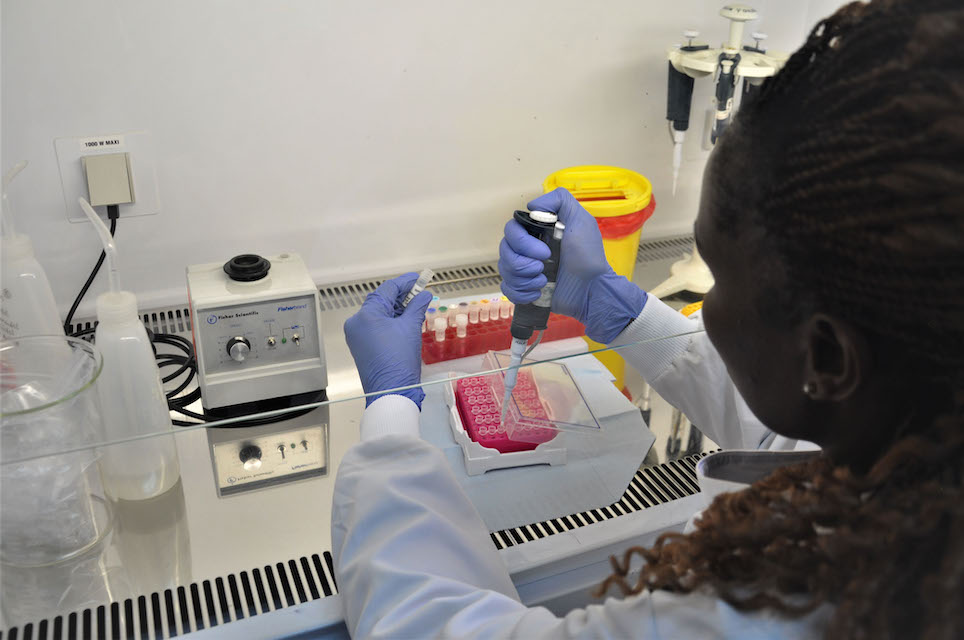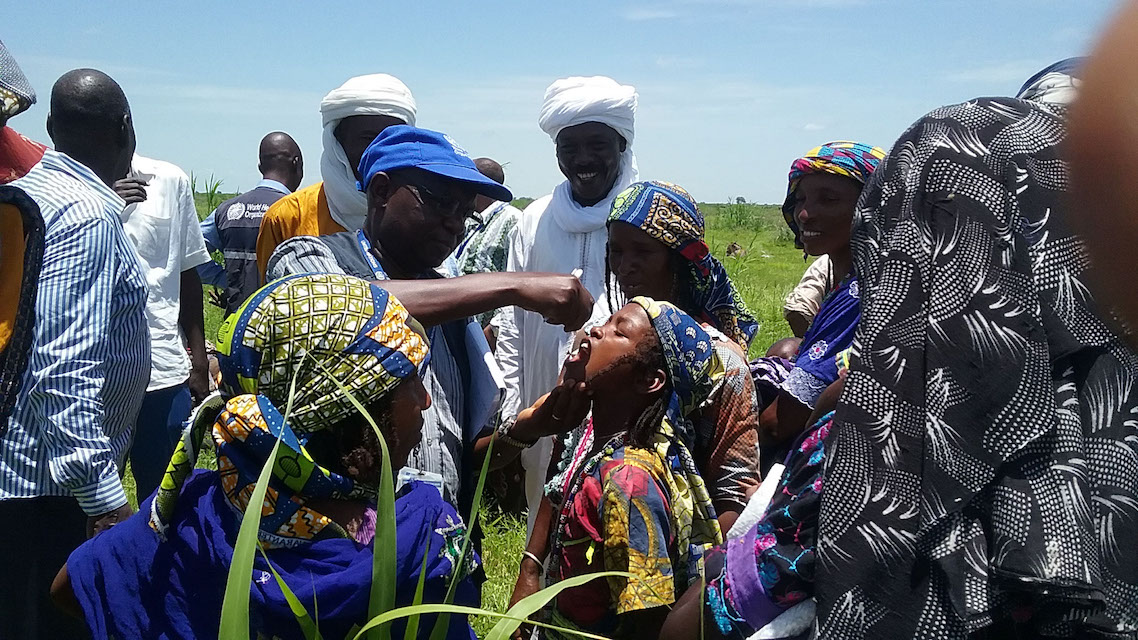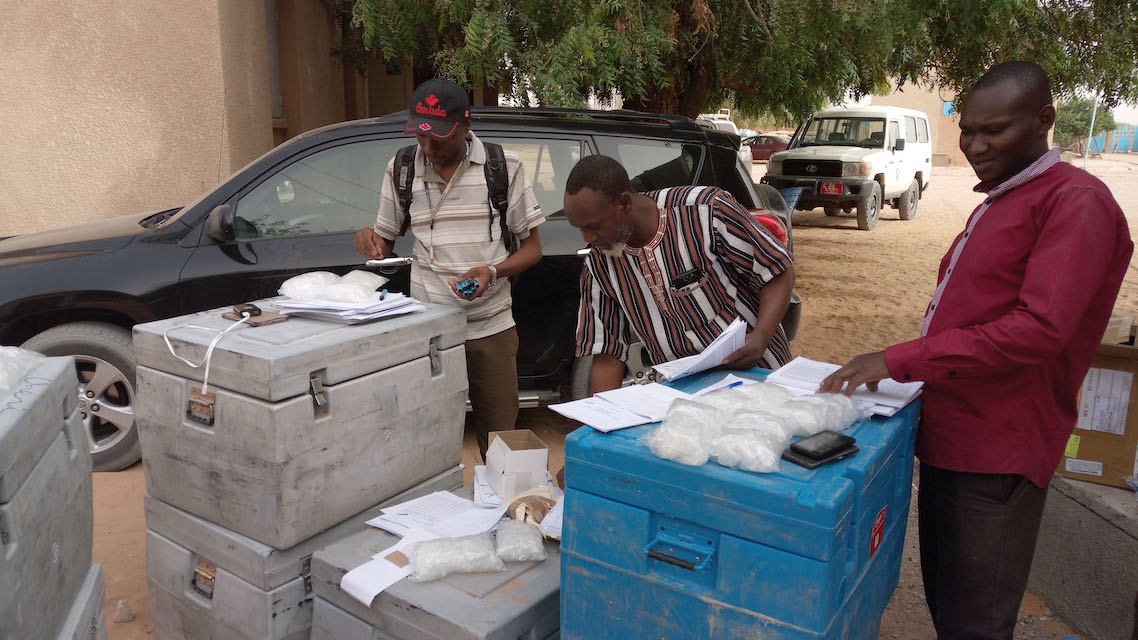In 2020, a significant milestone is expected for polio eradication and global health: the certification of the WHO African region as free wild poliovirus (WPV). This remarkable success is thanks to the mass immunization of millions of children using the oral polio vaccine (OPV). However, a rare strain of circulating vaccine-derived polioviruses (cVDPVs) affecting under-immunized communities still needs to be addressed.
Circulating vaccine-derived polioviruses (cVDPVs)
OPV is a very safe and effective vaccine. The global incidence of polio has reduced by more than >99% since 1988, with more than 10 billion doses of OPV have been given to more than 2.5 billion children in the last ten years. OPV also prevents person to person transmission of the virus. Once someone has taken the oral vaccine, the weakened virus is excreted out for a few weeks afterwards. In places with poor sanitation, others may consume food or water contaminated with this weakened virus in a process that acts like passive vaccination.

However, if a population is seriously under-immunized, the excreted vaccine-virus begins circulating among susceptible children in the community. If the virus is able to circulate for a prolonged period of time uninterrupted, it can mutate and over time can become virulent. This is known as a circulating vaccine-derived poliovirus (cVDPV).
cVDPVs in the African Region
A number of countries in the African region continue to experience cVDPVs, for which outbreak response campaigns are conducted.
These countries—many of which share borders—face similar challenges including low routine vaccination coverage, vaccine refusal among certain communities, difficult access to some locations, regional migration and displacement patterns and variations in the quality of vaccination campaigns. As a result, many thousands of children are left unprotected from polio and other vaccine-preventable childhood diseases.
Responding to cVDPVs
To address the growing challenge of cVDPVs, the GPEI’s new ‘Strategy for the Response to Type 2 Circulating Vaccine-Derived Poliovirus 2020-2021’ is focused on working with affected and at-risk countries to control cVDPV outbreaks ongoing across the African Region.
The first stage of this targeted strategy involved launching a rapid response team (RRT) specifically to respond to cVDPVs. Formed in September 2019, the team is coordinated from WHO’s Regional Office for Africa in Brazzaville and is composed of twenty experts in operations and vaccination management, epidemiology, logistics, and communications, drawn from GPEI’s core partners.
With polio targeted for eradication, even one case is an outbreak which requires immediate action. Every time a new polio outbreak is confirmed or even suspected in the African Region, the team is dispatched to the country within 72 hours. They quickly get to work putting together the building blocks in place for a 6-month outbreak response. Outbreaks are usually rapidly stopped with 2 to 3 rounds of high quality supplementary immunization activities.


If there are no outbreaks, the RRT focuses on preparedness planning from its base in Brazzaville. There are also 'virtual' global polio outbreak preparedness and rapid response teams (OPRRT) based at WHO's headquarters in Geneva, UNICEF headquarters in New York, and the United States Centers for Disease Control and Prevention (CDC) in Atlanta on stand-by if needed, supporting outbreaks in other WHO regions.
The second stage of the GPEI strategy involves the roll out of a new vaccine, called novel oral polio vaccine type 2 (nOPV). This is a stable version of the type 2 oral polio vaccine, which clinical trials have shown is safe and effective in protecting against type 2 polio viruses but also less likely than the current OPV to revert into a form of the virus that causes paralysis. At the end of 2020, nOPV is planned for global roll out upon agreement with national regulatory authorities.
The third stage is focused on strengthening routine immunization, both with the oral polio vaccine, and, particularly in areas at risk of cVDPVs, with the inactivated polio vaccine (IPV). Maintaining high collective immunity through routine immunization remains the backbone of any eradication program. In order to prevent importations of polio virus and protect as many children as possible, African countries should continue to use both the OPV and the IPV, that will ensure that both wild poliovirus and cVDPVs are kept at bay.



